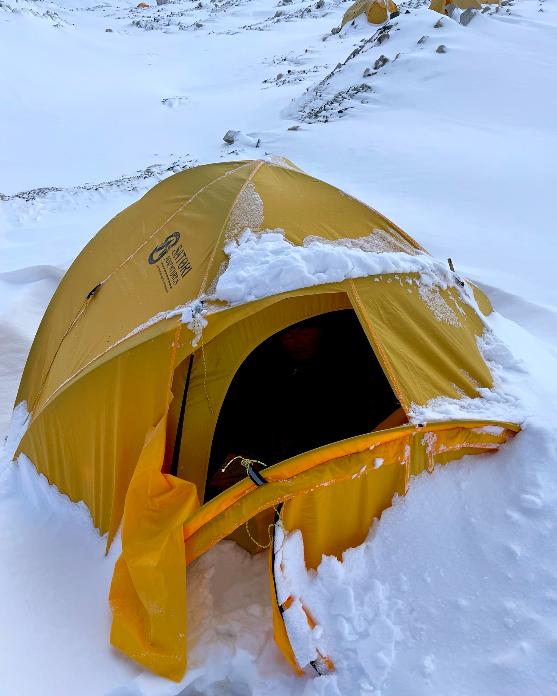The Everest base camp had over 1,500 climbers and support staff this season. Photo: Harshvardhan Joshi
The journey to the top
Camping with COVID
Joshi had his medicines ferried from Kathmandu via a helicopter. Photo: Harshvardhan Joshi
Peak preview
Anup Rai (left) and Furte Sherpa accompanied Joshi on Everest. Photo: Harshvardhan Joshi
Mountaineers climbing to Everest. Photo: Harshvardhan Joshi
The summit of Everest, as seen from South Col. Photo: Harshvardhan Joshi
Joshi reached the summit of Everest on May 23 at 6.43am. Photo courtesy of Harshvardhan Joshi
On their way to Camp 2. Photo: Harshvardhan Joshi
A cut above the Eve-rest
The route between Camp 1 and Camp 2 on Everest is laden with crevasses. Photo: Harshvardhan Joshi

Joshi with the two sherpas – Anup Rai (left) and Furte Sherpa – who helped him scale Everest. Photo: Harshvardhan Joshi